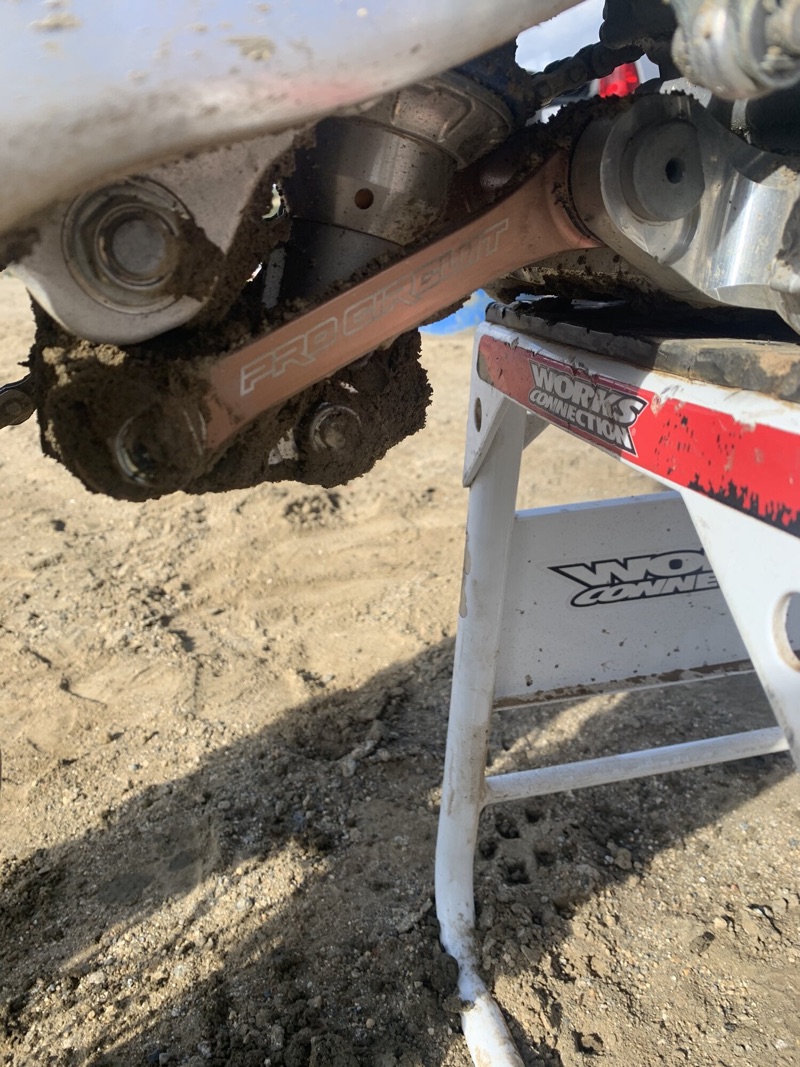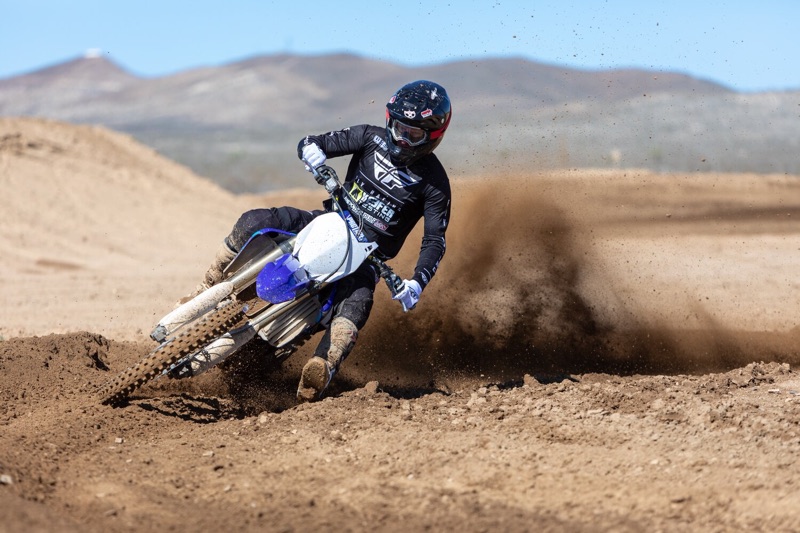Share This Article
I have tried links in the past on previous generation YZ450F’s with less than stellar results, but since Yamaha changed the frame on the 2020 machine, I thought I would revisit a link to see if it helps improves the Yamaha’s feel around the track.
Pro Circuit’s linkage arms are CNC-machined from billet aluminum and are designed to stiffen up the initial linkage curve in order to try and improve the geometry of the YZ450F’s chassis, in order to try and make the bike more stable in certain areas of the track. The linkage arms includes all of the required bearings and seals and is ready to bolt up. I wanted to see how it worked with the stock YZ450F suspension valving, so since Pro Circuit is backordered on them for a while, I purchased the Pro Circuit linkage arm at rockymountainatvmc.com for $189.95 . Once I received the PC link, I went to a few tracks to try the it and the stock link, back to back , to see if the Pro Circuit link is a benefit to the average rider.

One thing that I want from the stock 2020 Yamaha YZ450F is less movement from the rear end under acceleration. With the stock link, the rear end can squat too much at times (under throttle) and give me the feeling of less connection to the rear wheel under load. I do think the new 2020 frame and suspension valving has helped de-cel pitching, but once the fork is broke in, it can dive a little too much under hard braking.
After I installed the PC link I re-checked my sag numbers to make sure they were in the spec I desired. I ran 105mm of sag with the stock link and am currently at 105mm of sag with the PC link. With the PC 143.5mm link installed (142.0mm is stock) the Yamaha has a noticeably different feel to it on the track. I immediately noticed that my rear end felt firmer under acceleration, but that feeling wasn’t such a positive change. I went back to the van and turned my high speed compression (on the shock) out a quarter turn to help soften up the feeling on acceleration chop. Once I adjusted the high speed compression, I could start to feel the benefits of the Pro Circuit pull rods.
Off throttle (de-cel) the Yamaha YZ450F felt flatter and less front end heavy, which gave me a YZ450F that now had more control on braking bumps. Corner entry wasn’t improved, but I could feel how the Yamaha could lean over better through the middle to end of each corner. With the Pro Circuit link It took slightly less effort for me to continue my lean on the Yamaha, which usually isn’t its strong point. Out of the corner (with the softer high speed compression setting) the Yamaha had more rear wheel traction and followed the ground better on acceleration bumps. The rear of the bike was higher in its stroke with the PC rods and gave me more of a plush feel than the stock link. I am able to run a softer high speed compression setting as well as low speed to get more comfort on choppy ruts.

The overall feeling of the YZ450F with the PC link is a slightly calmer chassis off throttle with a better mid to exit cornering feel. If I had to point out a negative about the PC link it would have to be that once you’re off throttle the Yamaha has a firmer rear end feel. Even though I am gaining control on braking bumps, the YZ450F will feel firmer if the rider isn’t aggressive or pushing the bike. I feel the Pro Circuit linkage arms reward a more aggressive rider, so if you’re the average weekend warrior that likes to cruise his Yamaha YZ450F and is comfortable with your set up, these Pro Circuit linkage arms may not be the best purchasing decision. However, if you’re looking for more control on braking bumps, with a firmer feel and an easier area 2 to 3 (see testing term explanation below) through corners, then the Pro Circuit linkage arms make a positive difference.
Cornering Testing Terminology:
Area 1: Beginning of corner (initial lean, tip in)
Area 2: Middle of corner (weight feel, traction, cornering stability)
Area 3: Exit of corner (rear wheel traction/connection, comfort)
